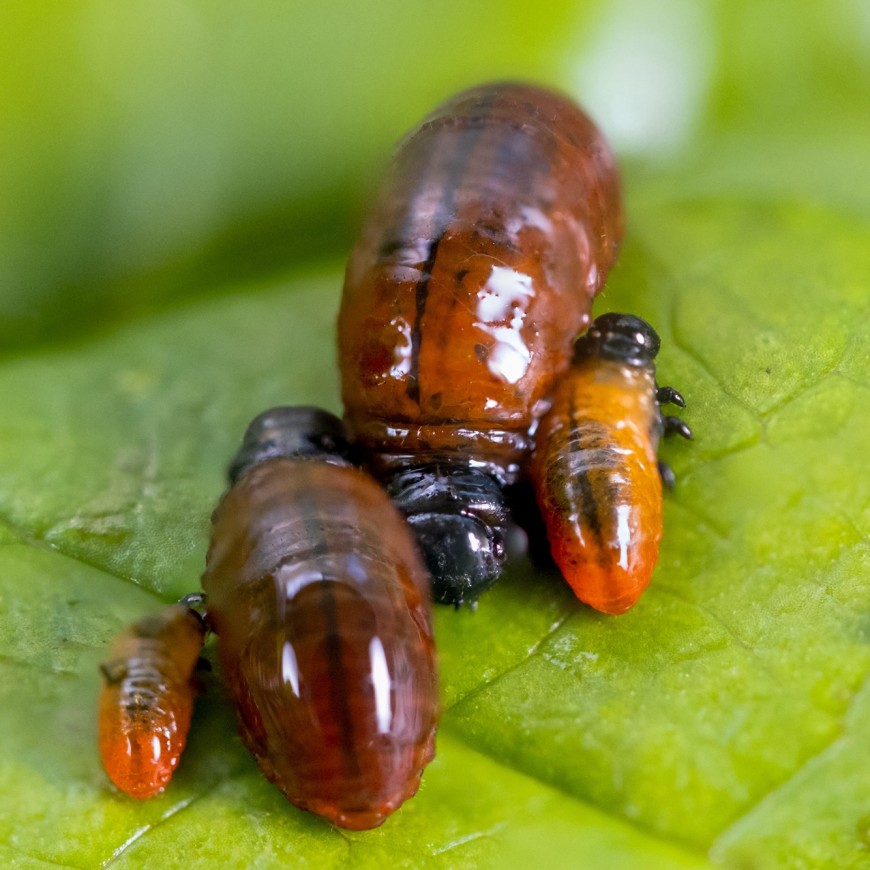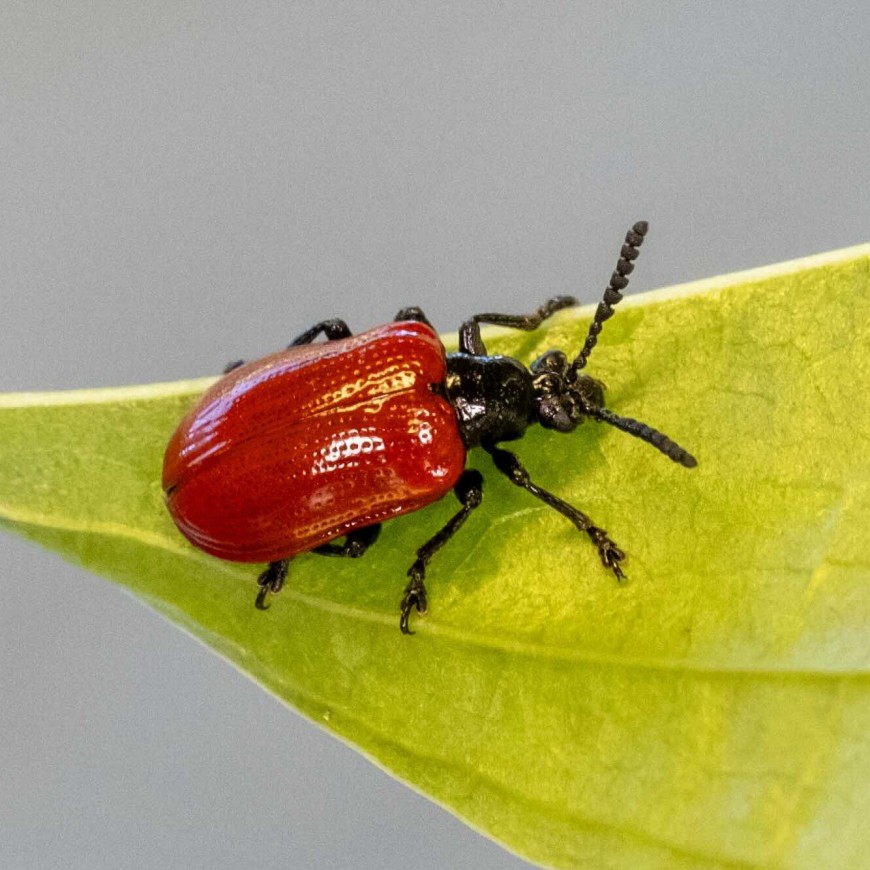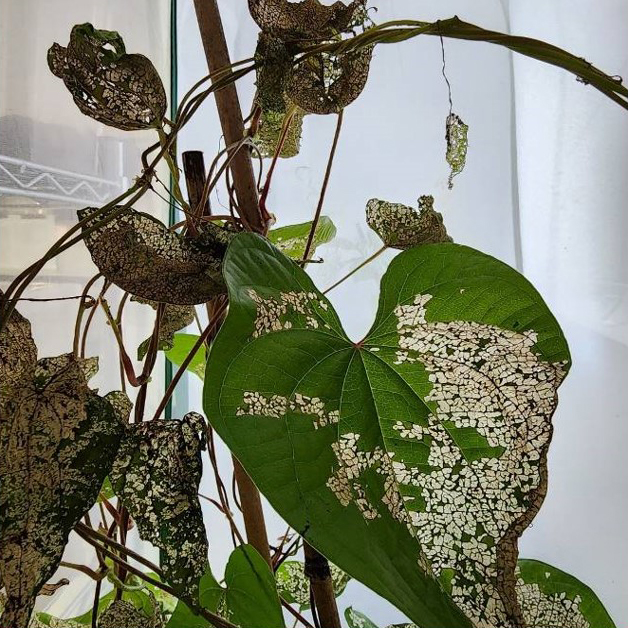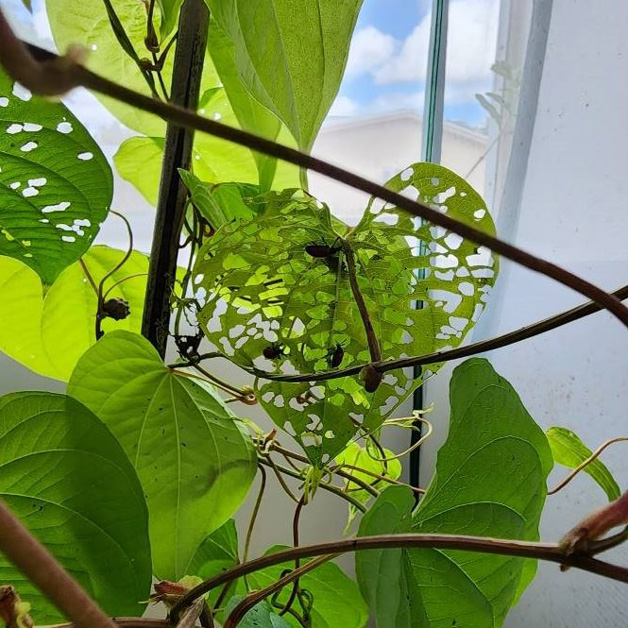Air potato beetle
History in the Pacific
A leaf-feeding beetle was introduced to Niue in April 2024 to control air potato (Dioscorea bulbifera), also known locally as hoi.
This is a new natural enemy for the Pacific.
However, the beetle has been extensively studied in the United States and was first released in Florida and other southern states in 2012. There are plans to also introduce this beetle to other parts of the Pacific where air potato is a problem.
How would I recognise the beetle and what is its lifecycle?
The adults are 9mm long and bright red. To find them look on the underside of damaged leaves. Have your hand or a container ready to catch, as the adults tend to drop to the ground when disturbed. Adults are long-lived, lasting 5 months or longer.
You may also see big batches of yellow eggs on fresh leaves. The females each lay more than 1000 eggs in their lifetime. The brown larvae take about 4 days to hatch out and are usually found clustered together feeding at the tips of leaves.

Air potato beetle larvae
After about 8 days the larvae are large enough to pupate in the soil for a couple of weeks. The whole lifecycle only takes about a month, so multiple generations can be achieved each year.
Don’t bother looking for the beetles in the winter/dry season when air potato dies back. Adults will be around then but hiding away.

Adult air potato beetle
How does it damage the air potato vines?
Adult beetles chew lots of round holes in the leaves. Larvae eat the leaf tissue, leaving the skeletonised veins of the leaf. Adults will also nibble on the bulbils, but both prefer leaves especially the fresh ones. This stops the vines from growing as large.

Larval feeding damage

Adult feeding damage
How can I get the most out of it?
The adults can fly and will spread around over time slowly by themselves. However, if it is necessary to speed up dispersal the beetles could be collected at sites where they are abundant and moved to where they are needed. They are safe to touch, and don’t bite. If necessary, the beetles can be kept in a container with fresh leaves for a few days, but the sooner they can be released the better.
Are there other natural enemies for this weed?
A beetle (Liliocheris egena) that feeds on the bulbils of air potato has recently been approved for release in Florida. It is expected to complement the leaf beetle and achieve even greater suppression of air potato. The bulbil beetle could be considered for the Pacific, if necessary, in the future.
